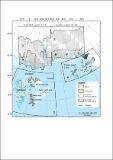Files in this item
Estimating the Barents Sea polar bear subpopulation size
Item metadata
| dc.contributor.author | Aars, J | |
| dc.contributor.author | Marques, Tiago A. | |
| dc.contributor.author | Andersen, M | |
| dc.contributor.author | Belikov, S | |
| dc.contributor.author | Boltunov, A | |
| dc.contributor.author | Buckland, Stephen Terrence | |
| dc.contributor.author | Wiig, O | |
| dc.date.accessioned | 2011-06-17T14:02:04Z | |
| dc.date.available | 2011-06-17T14:02:04Z | |
| dc.date.issued | 2009-01 | |
| dc.identifier | 402002 | |
| dc.identifier | 5a1e2740-2dda-495f-86cd-22465c1b01f3 | |
| dc.identifier | 58349121746 | |
| dc.identifier | 000262479000003 | |
| dc.identifier.citation | Aars , J , Marques , T A , Andersen , M , Belikov , S , Boltunov , A , Buckland , S T & Wiig , O 2009 , ' Estimating the Barents Sea polar bear subpopulation size ' , Marine Mammal Science , vol. 25 , no. 1 , pp. 35-52 . https://doi.org/10.1111/j.1748-7692.2008.00228.x | en |
| dc.identifier.issn | 0824-0469 | |
| dc.identifier.other | standrews_research_output: 22397 | |
| dc.identifier.other | ORCID: /0000-0002-2581-1972/work/56861248 | |
| dc.identifier.other | ORCID: /0000-0002-9939-709X/work/73700999 | |
| dc.identifier.uri | https://hdl.handle.net/10023/1879 | |
| dc.description.abstract | A large scale survey was conducted in August 2004 to estimate the size of the Barents Sea polar bear subpopulation. We combined helicopter line transect distance sampling surveys in most of the survey area with total counts in small areas not suitable for distance sampling. Due to weather constraints we failed to survey some of the areas originally planned to be covered by distance sampling. For those, abundance was estimated using a ratio estimator, in which the auxiliary variable was the number of satellite telemetry fixes (in previous years). We estimated that the Barents Sea subpopulation had approximately 2650 (95% CI approx 1900 to 3600) bears. Given current intense interest in polar bear management due to the potentially disastrous effects of climate change, it is surprising that many subpopulation sizes are still unknown. We show here that line transect sampling is a promising method for addressing the need for abundance estimates. | |
| dc.format.extent | 18 | |
| dc.format.extent | 269504 | |
| dc.format.extent | 987601 | |
| dc.language.iso | eng | |
| dc.relation.ispartof | Marine Mammal Science | en |
| dc.subject | Helicopter surveys | en |
| dc.subject | Distance sampling | en |
| dc.subject | Line transects | en |
| dc.subject | Polar bears | en |
| dc.subject | Barents Sea | en |
| dc.subject | Subpopulation size | en |
| dc.subject | QA Mathematics | en |
| dc.subject | QL Zoology | en |
| dc.subject | QH Natural history | en |
| dc.subject | SDG 13 - Climate Action | en |
| dc.subject.lcc | QA | en |
| dc.subject.lcc | QL | en |
| dc.subject.lcc | QH | en |
| dc.title | Estimating the Barents Sea polar bear subpopulation size | en |
| dc.type | Journal article | en |
| dc.contributor.institution | University of St Andrews. Scottish Oceans Institute | en |
| dc.contributor.institution | University of St Andrews. Centre for Research into Ecological & Environmental Modelling | en |
| dc.identifier.doi | https://doi.org/10.1111/j.1748-7692.2008.00228.x | |
| dc.description.status | Peer reviewed | en |
| dc.identifier.url | http://www.scopus.com/inward/record.url?scp=58349121746&partnerID=8YFLogxK | en |
This item appears in the following Collection(s)
Items in the St Andrews Research Repository are protected by copyright, with all rights reserved, unless otherwise indicated.


